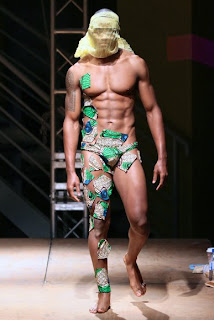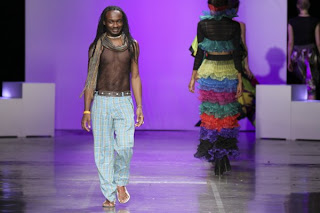Many of the world's biggest
successful brands are turning to Bangladesh as a quality, trusted producer of
high-end fashion.
Personally, I found Al Jazeera's
Nicolas Haque report from Dhaka veeeery insightful and interesting.
It illustrates just how Al Jazeera news is open to the beauty in a world that
is beyond the Western version of what fashion and beauty are, and certainly
sets itself apart from the relatively narrow reporting by the BBC, Fox News and
others.
With Aarong Bangladeshi Fashion
House also playing the role of protector and promoter of traditional
Bangladeshi products and designs. It houses an extensive design library where
remnants of that famous rich craft heritage, such as the lovely Nakshikantha
art and Jamdani patterns, have been widely researched and archived for present
as well as future use.
Models have been strutting the catwalks recently for London and Milan
Fashion Week, but many of the world's biggest brands are turning to Bangladesh
for cheaper fashion trends, whose quality far exceeds how much they
are truly worth.
The nation of Bangladesh, also bordered by
Burma and India on all sides, is earning a growing reputation as a quality
producer of high-end fashion for export.
I certainly don't agree with the view
that what's going on in Bangladesh is "a case of whites exploiting the
poor brown people, and is nothing new."
This is actually the best way in which
talented Designers can get to showcase their talent and make useful contacts
with fashion entrepreneurs around the world. The Fashion and Textile Industries
are about who you know as much as it's about what you know - and to dismiss and
discourage this kind of collaboration will be nothing more than ignorance or
just pure jealous sabotage.
Watch the Video below:
With numerous rising icons within the Bangladesh Fashion
industry, like the great Bibi Russell-
who has almost single-handedly
put Bangladesh on the global fashion map, especially the Western world. Her
inspirational commitment to the development, expansion and welfare of
Bangladeshi weavers and support for the skilled traditional crafts has been acclaimed
and appreciated world wide.
There is even going to be a British Bangladesh Fashion
Week (BBFW) 2012, which will be scheduled from 11th to 13th October 2012, highly
anticipated and aimed at celebrating and promoting beautiful and innovative Bangladeshi
fashion textiles, arts and culture- further campaigning the relationship
between the UK and the country of Bangladesh.
This intriguing event in the East London region will showcase the vibrant and colourful talent of designers and share a Bangladeshi heritage. It promises an eclectic mix of traditional and modern designs. See the link below:
This intriguing event in the East London region will showcase the vibrant and colourful talent of designers and share a Bangladeshi heritage. It promises an eclectic mix of traditional and modern designs. See the link below:
http://www.britishbangladeshfashionweek.com/








